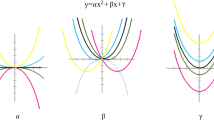Abstract
The electroretinogram, electro-oculogram and electroretinogram oscillatory potential all reflect the mass activity of the retina. The electroretinogram usually remains normal after branch retinal vein occlusion, whereas the electro-oculogram and oscillatory potential often show abnormalities. These tests thus have a differential sensitivity to branch retinal vein occlusion. However, whether the inner layer of the retina is affected in branch retinal vein occlusion has not been determined. In this study, conventional electroretinographic and oscillatory potential data were compared in 34 patients with branch retinal vein occlusion, while electroretinographic and electro-oculographic data were compared in 30 patients with branch retinal vein occlusion, in an attempt to determine whether the inner retina was affected in this disorder. None of the conventional electroretinographic variables showed any significant difference between the eyes with branch retinal vein occlusion and the fellow eyes. In the oscillatory potential test, however, the sum of the amplitudes of O1, O2, O3 and O4 showed a significant difference (p < 0.02). In addition, the light peak-dark trough ratio and the light peak showed a significant difference in the electro-oculogram (p < 0.05 and p < 0.05, respectively). Since the oscillatory potential and the electro-oculogram light rise potential reflect the activity of the inner retina, our data suggest that the inner retina was affected by branch retinal vein occlusion and that these variables are more sensitive indicators than the electroretinogram.
Similar content being viewed by others
Abbreviations
- BRVO:
-
branch retinal vein occlusion
References
Kanski JJ. Retinal vein occlusion.In: Clinical ophthalmology. 2nd ed. London Butterworths, 1989: 318–28.
Karpe G, Uchermann A. The clinical electroretinogram. Acta Ophthalmol 1955; 33: 493–516.
Henkes HE. Electroretinography in circulatory disturbances of the retina. Arch Ophthalmol 49: 1953; 191–201.
Ikeda H, Friedman A. Electro-oculograph, electroretinograph and the visual evoked occipital responseIn: Sorsby A, ed. Modern ophthalmology. 2nd ed. London: Butterworths, 1972; 1: 543–56.
Ponte F, Lodoto G. Electro-oculographic investigations in central retinal vein occlusion. Doc Ophthalmol Proc Ser 1976; 15: 155–7.
Francois J, DeRouck A, Cambie E. Electrophysiological aspects in retinal venous thrombosis. Doc Ophthalmol Proc Ser 1973; 2: 43–56.
Algvere P. Clinical studies on the oscillatory potentials of the human electroretinogram with special references to the scotopic b-wave. Acta Ophthalmol 1968; 46: 993–1024.
Usami E. Studies on oscillatory potentials in the cases of occlusion of the retinal artery and thrombosis of the retinal veins. Jpn J Ophthalmol Suppl 10: 1966; 110–9.
Hara A, Nohmi M, Sato M. Electro-oculogram in retinal vein occlusion. Jpn Rev Clin Ophthalmol 1991; 85: 122–6.
Hara A, Miura M, Nagatomo M. Decrease of OPs in the BRVO. Jpn J Ophthalmol 1993; 47: 101–3.
Yonemura D. An electrophysiological study on activities of neuron and non-neuronal retinal elements in man with reference to its clinical application. Acta Soc Ophthalmol Jpn 1977; 81: 112–45.
Bresnik GH, Korth K, Groo A, Palta M. Electroretinographic oscillatory potentials predict progression of diabetic retinopathy. Arch Ophthalmol 1984; 102: 1307–11.
Gouras P, Carr RE. Light-induced DC responses of monkey retina before and after central retinal artery interruption. Invest Ophthalmol Vis Sci 1965; 4: 411–7.
Thailer A, Heilig P. EOG and ERG components in ischemic retinopathy. Opthalmol Res 1977; 9: 38–46.
Nagaya T, Hirata A, Kaneeko T. Studies upon occlusion of central retinal artery. Folia Ophthalmol Jpn 1977; 21: 197–202.
Heynen H, Wachtmeister L, van Norren D. Origin of the oscillatory potentials in the primate retina. Vison Res. 1985; 25: 1365–73.
Wachtmeitser L, Dowling JE. The oscillatory potentials of the mudpuppy retina. Invest Ophthalmol Vis Sci 1978; 17: 1176–88.
Yonemura D. The oscillatory potential of the electroretinogram. Acta Soc Ophthalmol Jpn 1962; 66: 198–215.
Imaizumi K, Takahashi F, Tohyama T, Horie E, Tazawa Y, Ogawa K, Shoji U. EOG in cases of highly disturbed vision. Jpn J Ophthalmol 1964; 18: 333–45.
Linsenmeier RA, Mines AM, Steinberg RH. Effects of hypoxia and hypercapnia on the light peak and electroretinogram of the cat. Invest Ophthalmol Vis Sci. 1983; 24: 37–46.
Arden GH, Barrada A, Kelsey JH. New clinical test of retinal function based upon the standing potential of the eye. Br J Ophthalmol 1962; 46: 449–67.
Adams A. The normal EOG. Acta Ophthalmol 1973; 51: 551–61.
Author information
Authors and Affiliations
Rights and permissions
About this article
Cite this article
Hara, A., Miura, M. Decreased inner retinal activity in branch retinal vein occlusion. Doc Ophthalmol 88, 39–47 (1994). https://doi.org/10.1007/BF01203700
Accepted:
Issue Date:
DOI: https://doi.org/10.1007/BF01203700




